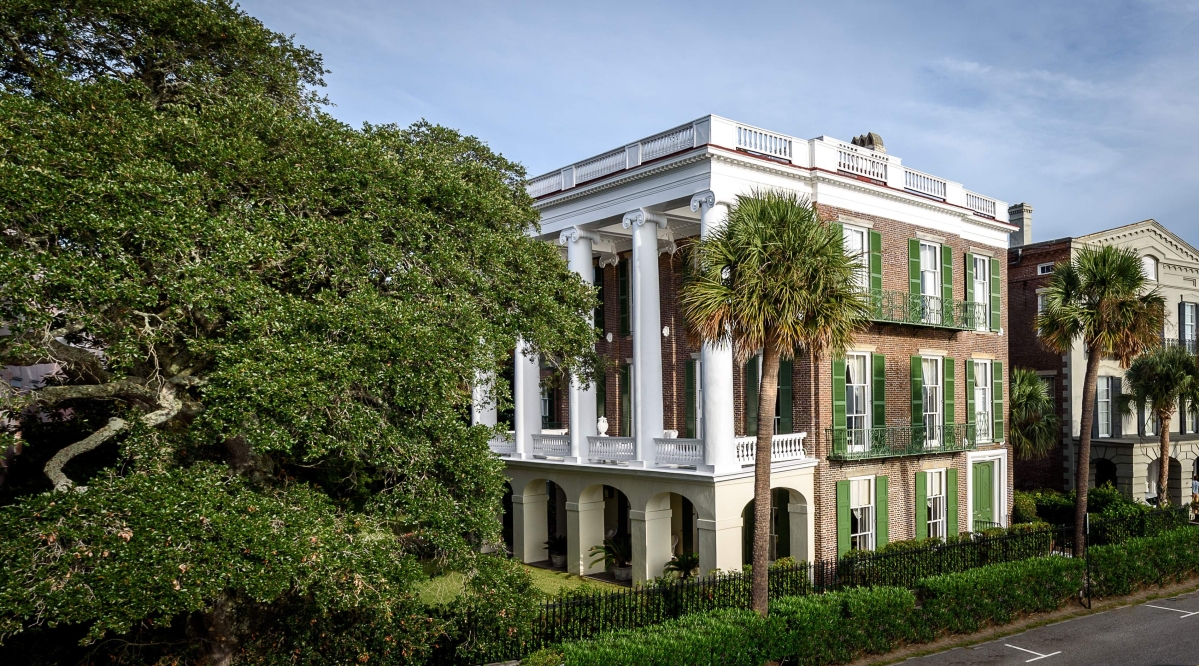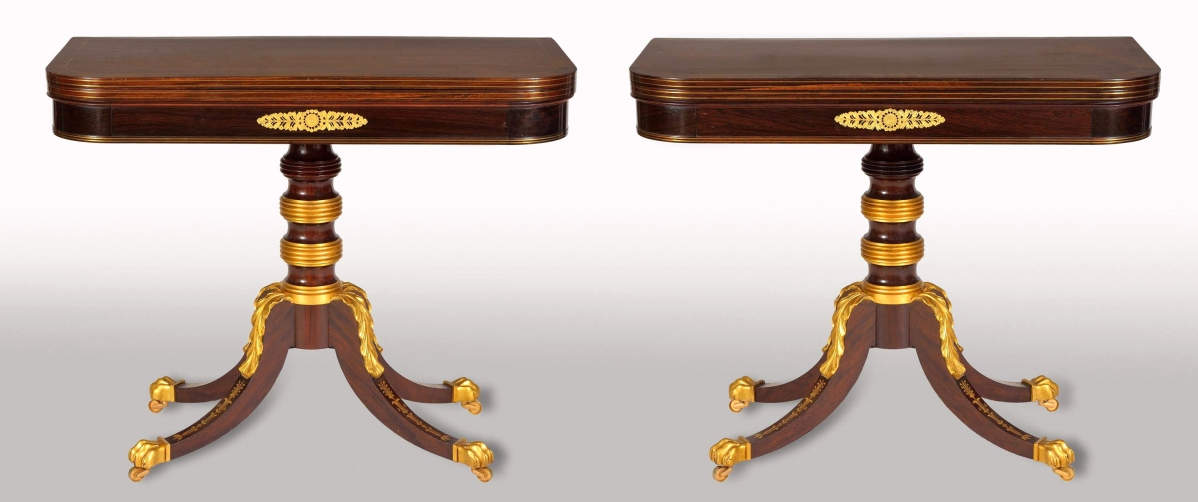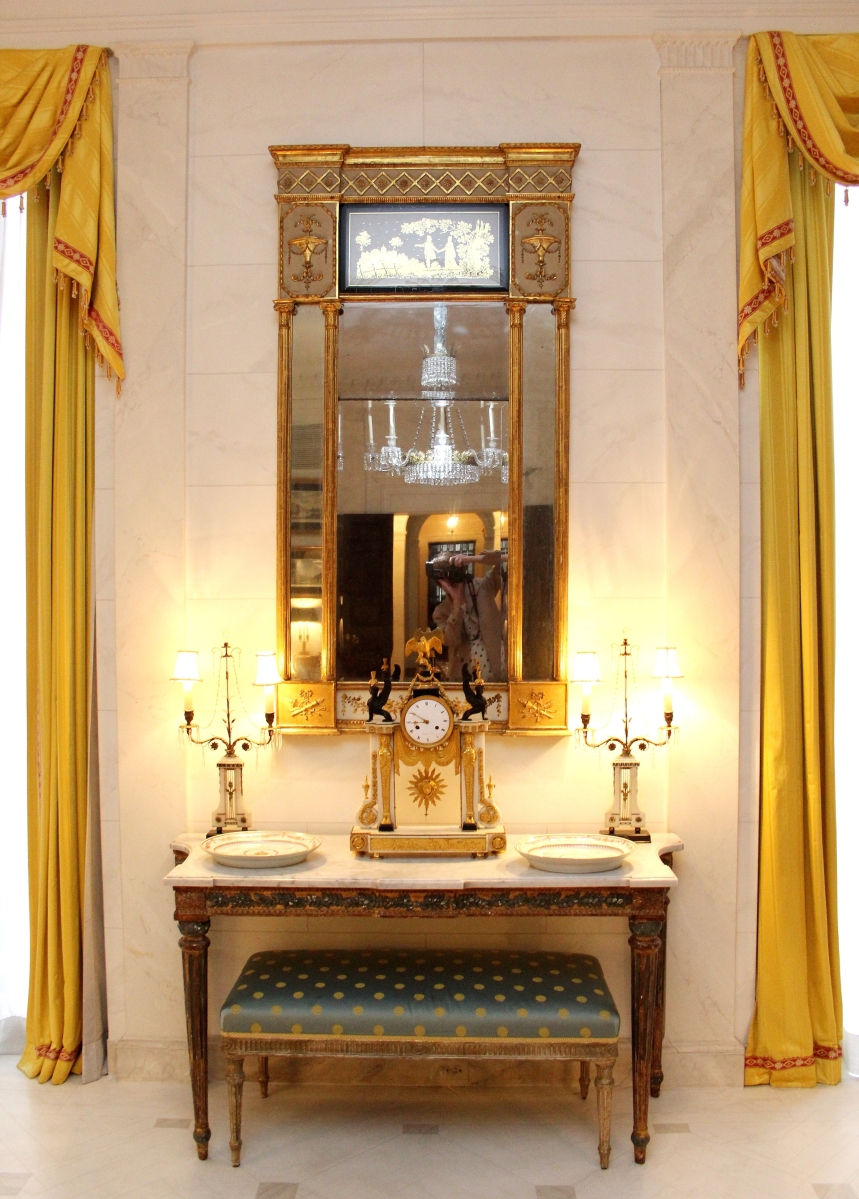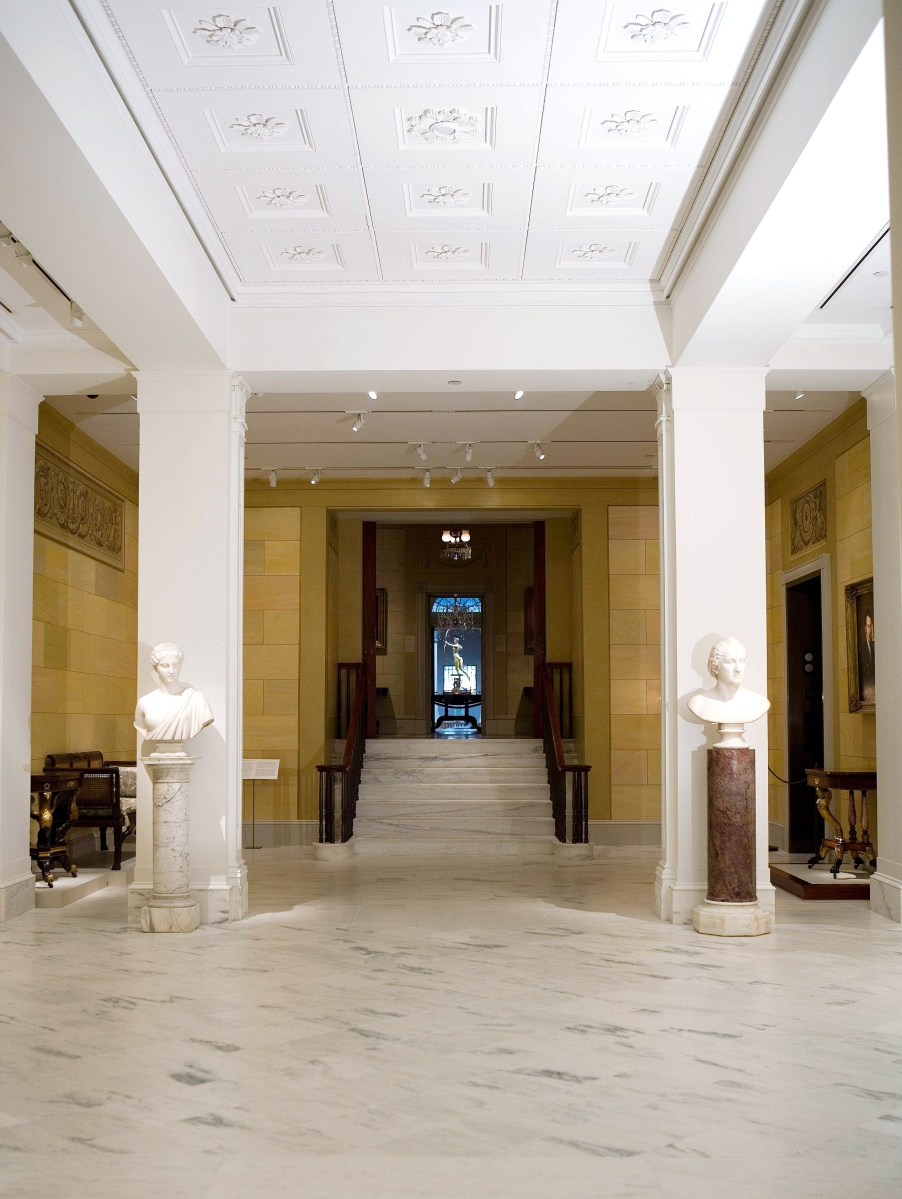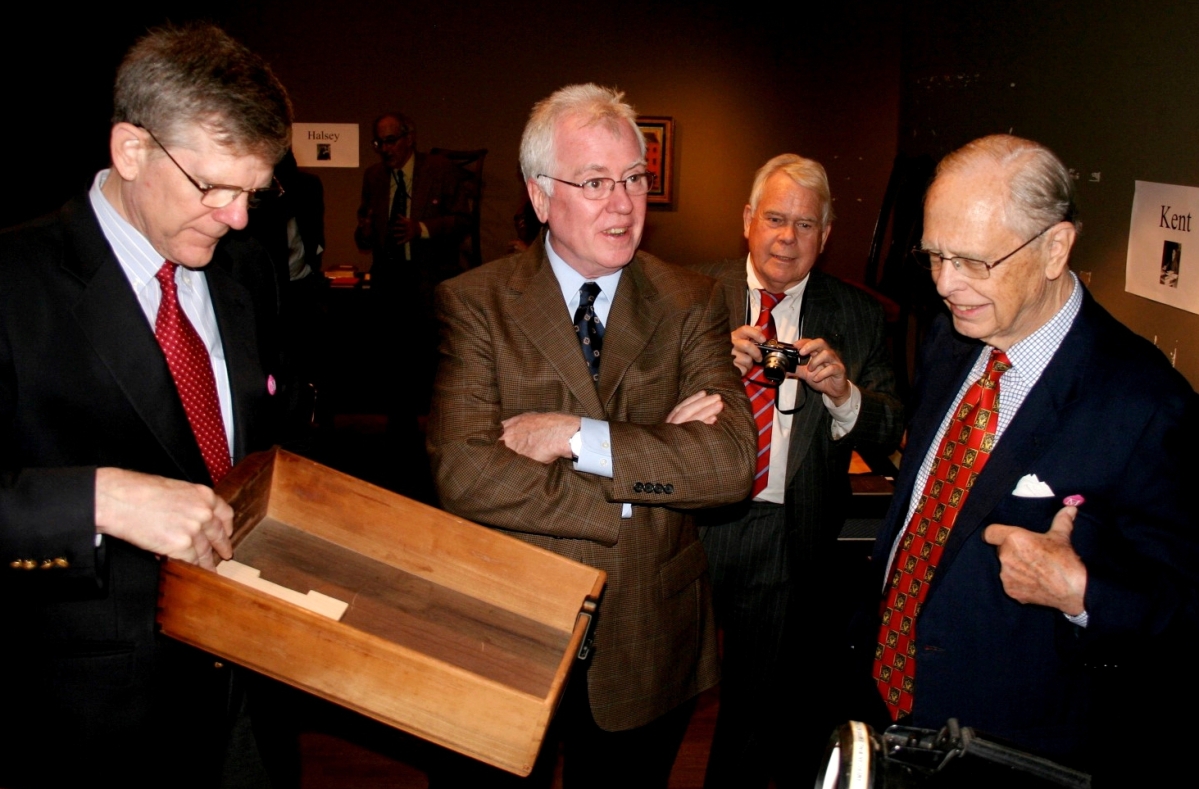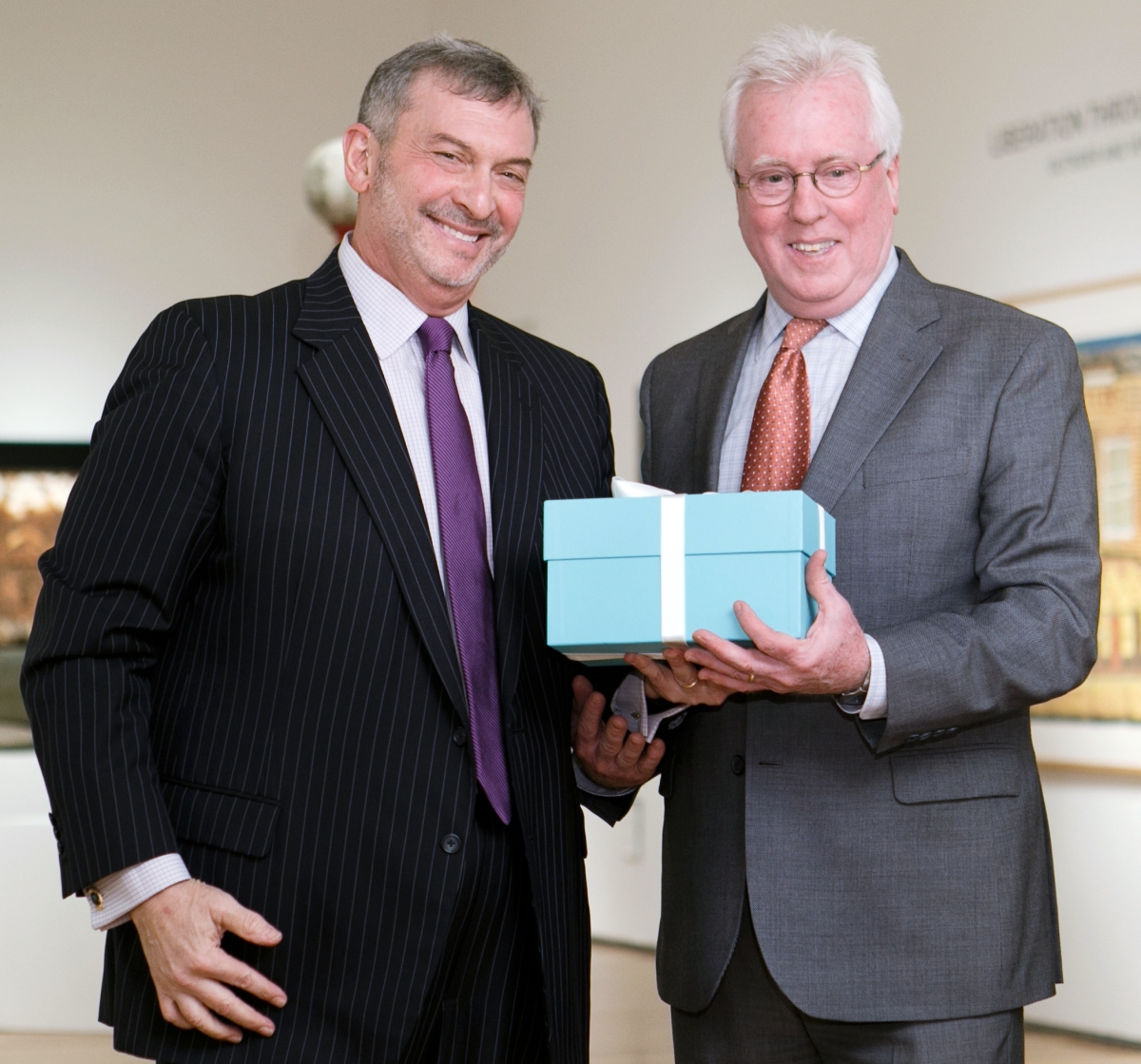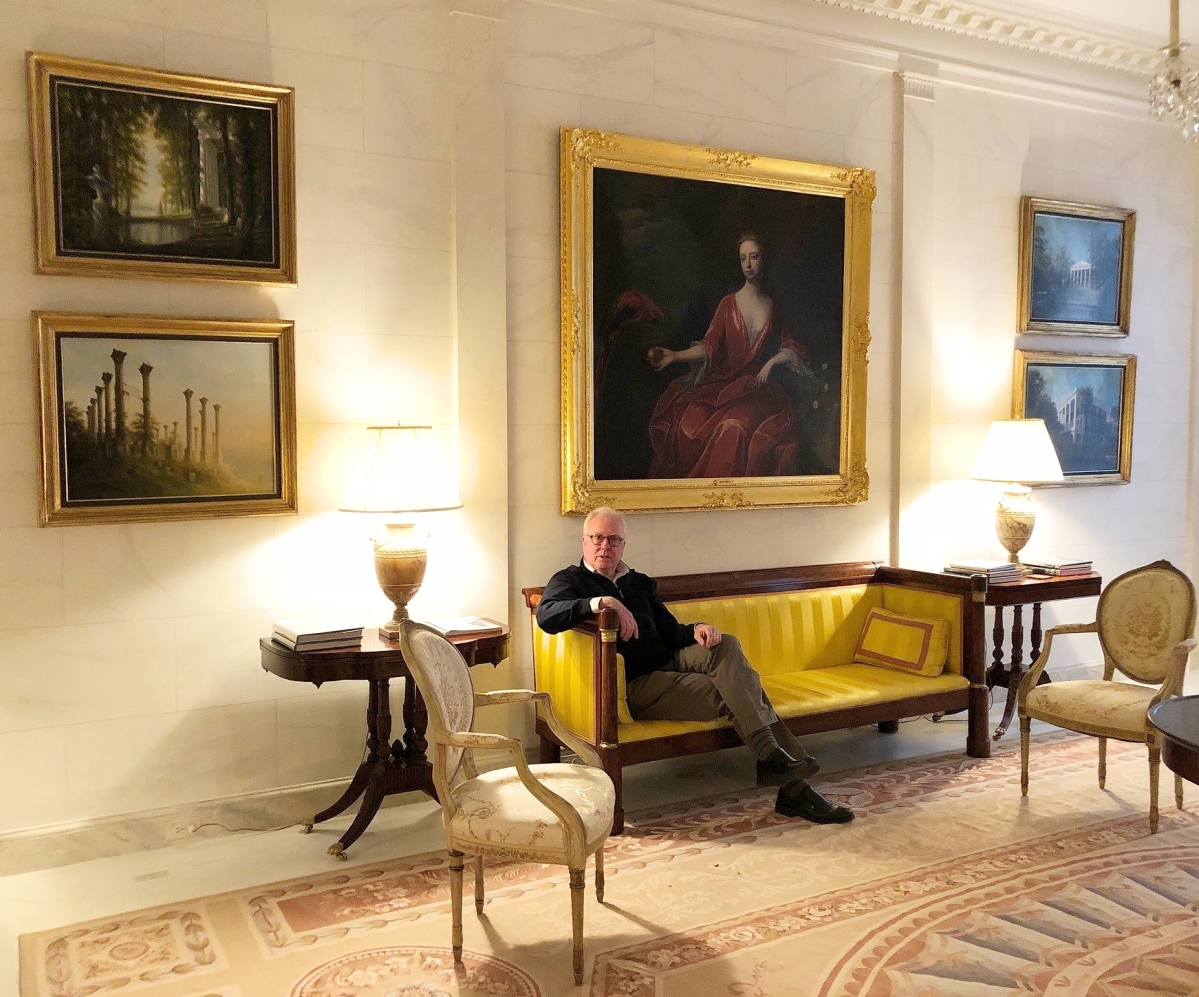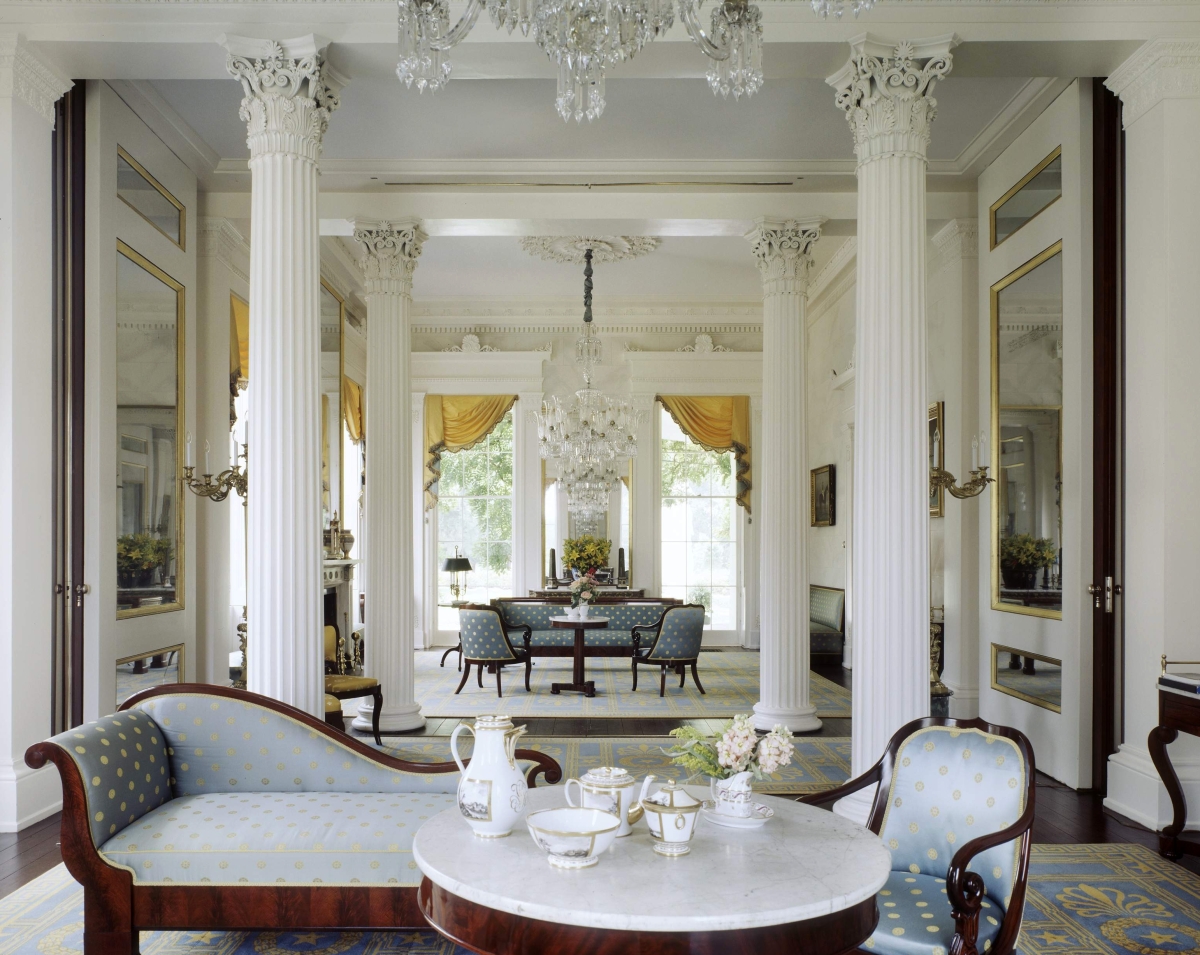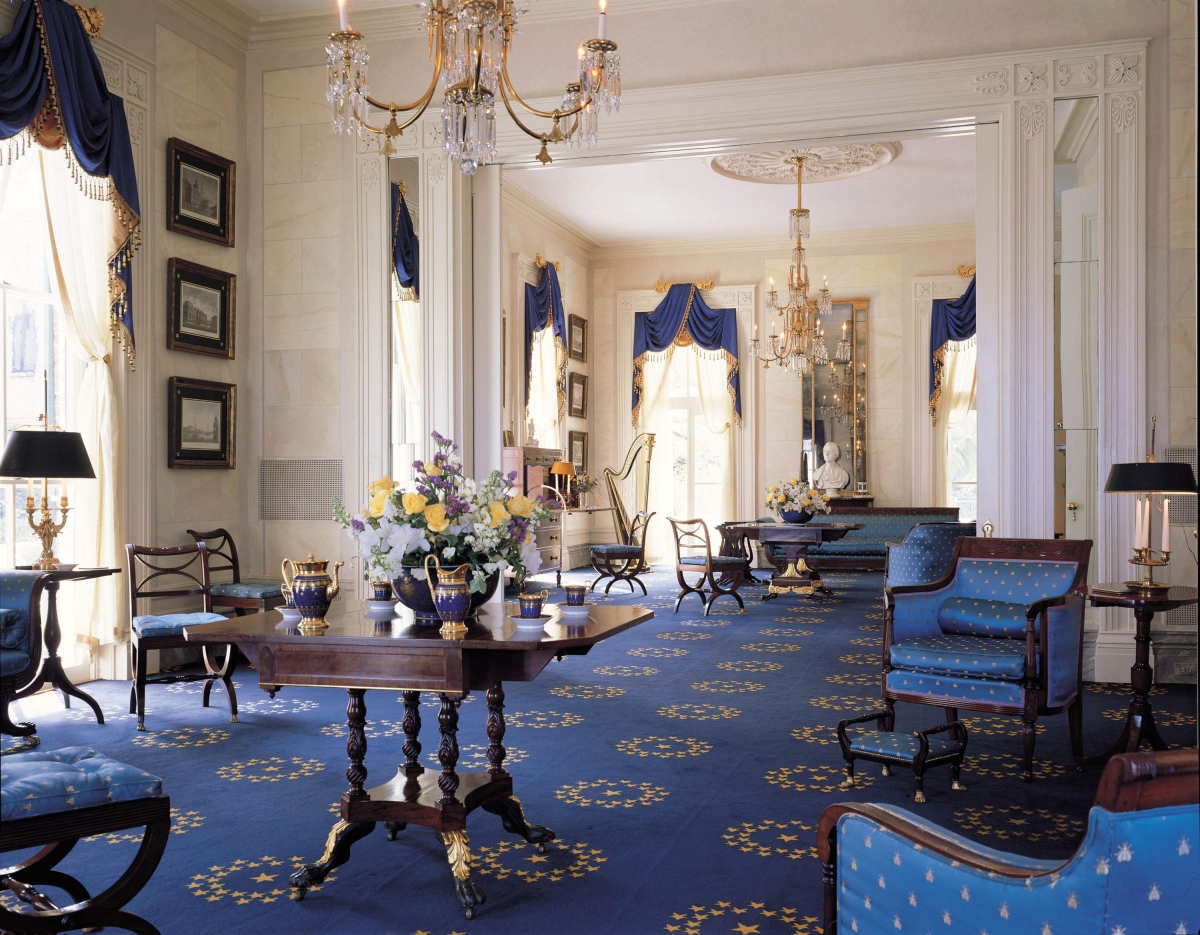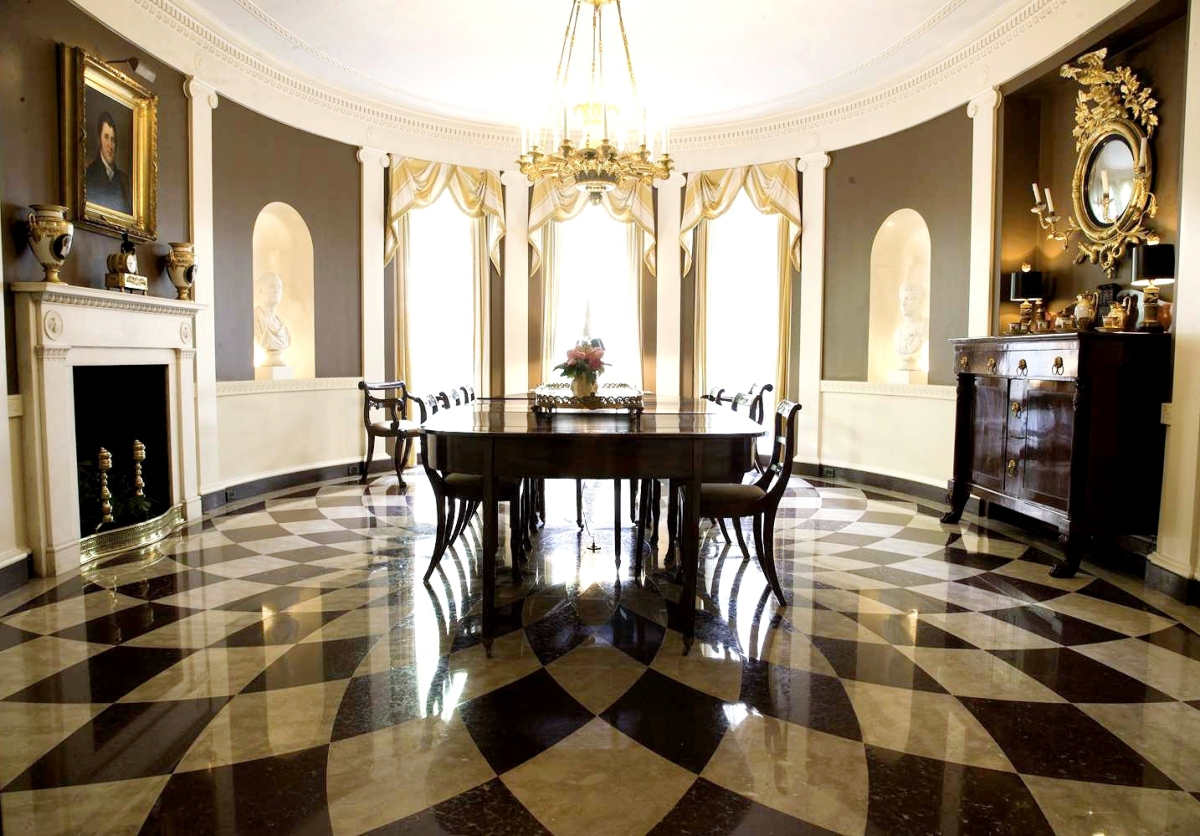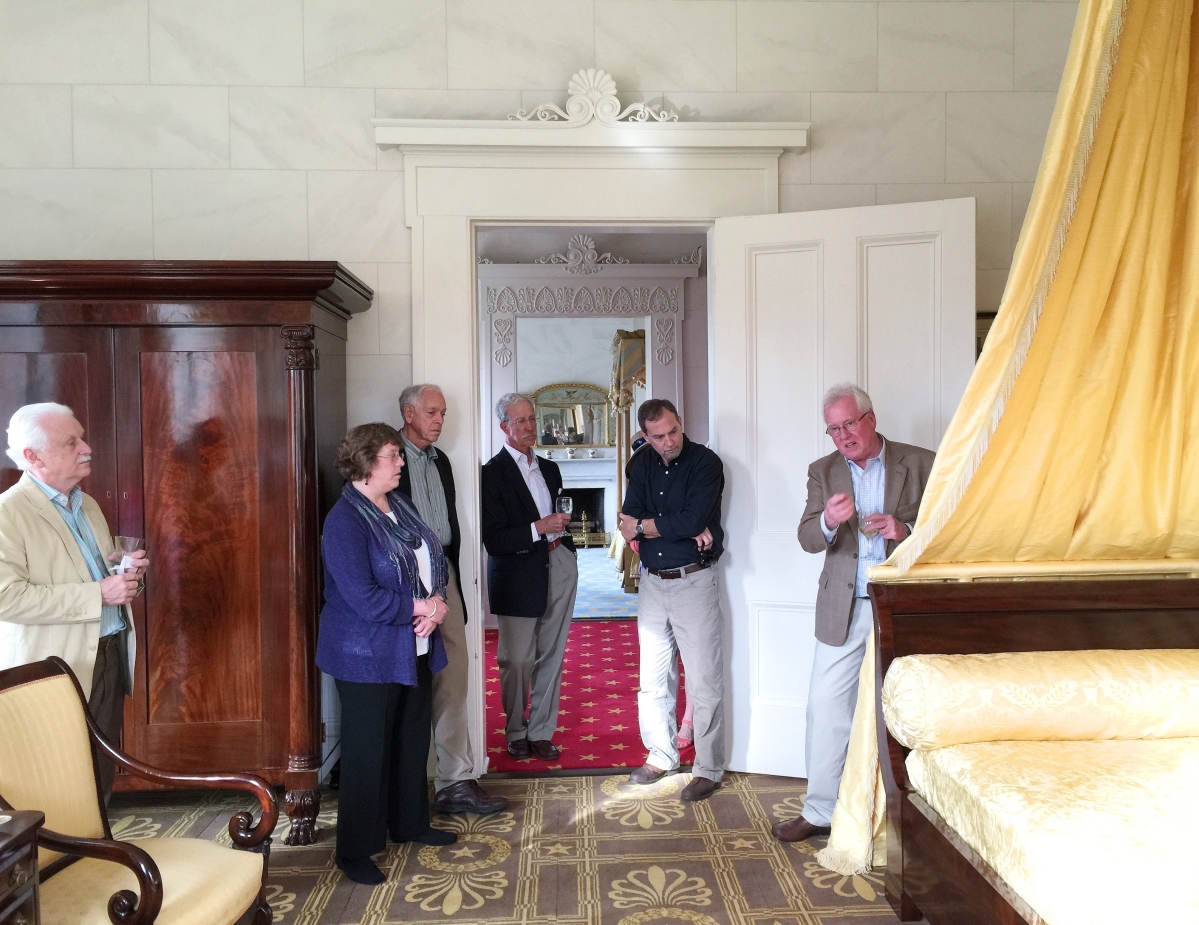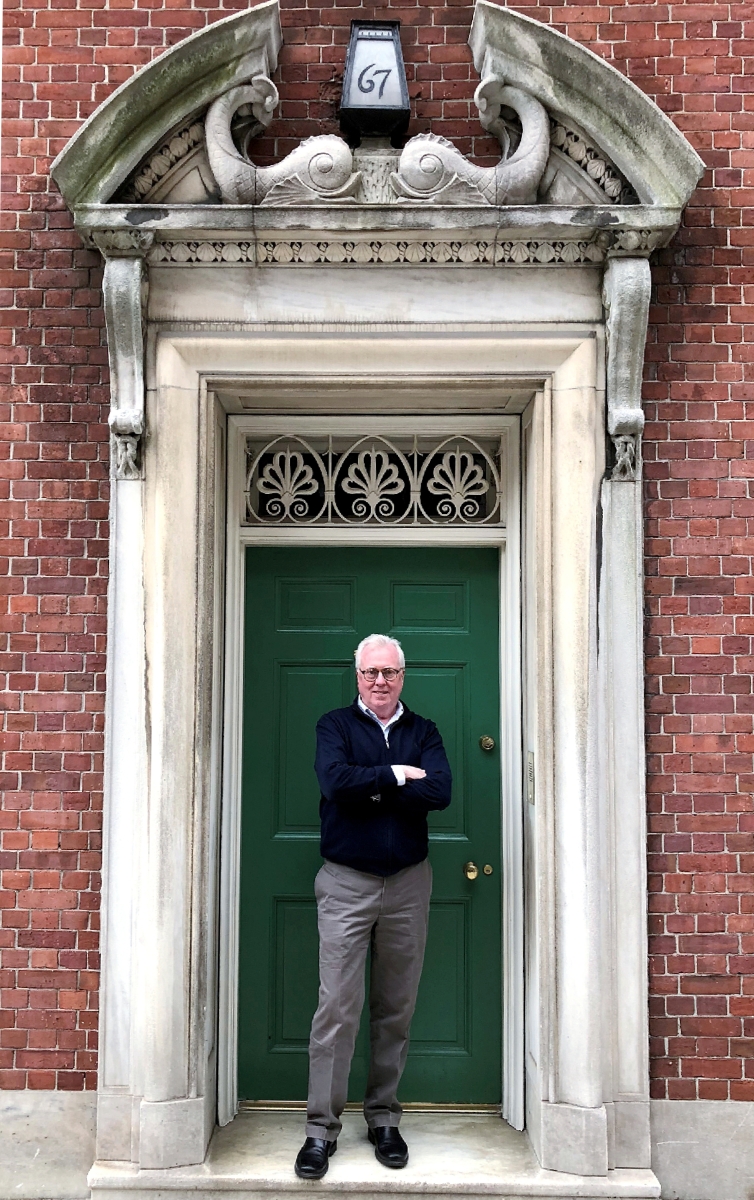
ADA Award of Merit winner Peter M. Kenny outside 67 East 93rd Street. Today the private residence of Richard Jenrette, the brick townhouse is part of a complex of buildings designed by the architectural firm Delano & Aldrich and completed between 1927 and 1931.
By Laura Beach
NEW YORK CITY ‑- The week I met on short notice with Peter M. Kenny, the authority on American Federal and Classical design, he was just back from Virginia, where he addressed the 70th annual Colonial Williamsburg Antiques Forum. He popped into his office after lunching with a foundation head, top collector and an auction house executive, then looked in on an artisan undertaking work in the oval dining room at 67 East 93rd Street, one of the George F. Baker houses. The room, with its Vasarely-like pattern of light and dark marble flooring, is an arresting feature of the Delano and Aldrich-designed complex containing the offices of the Classical American Homes Preservation Trust (CAHPT) and the seasonal residence of CAHPT’s founder and principal patron, Richard H. Jenrette.
Kenny, co-president of CAHPT with Margize Howell, welcomed me despite his hectic schedule. His generosity of spirit and deep expertise made him a favorite to win the 2018 Award of Merit, to be presented by the Antiques Dealers Association of America (ADA) at a dinner at the Philadelphia Antiques and Art Show on Friday, April 20.
Kenny’s hands-on approach to objects, prompted by a maker’s appreciation for materials and methods, endears him to colleagues. “A great curator, it seems to me, has a visceral response to the stuff with which he or she is involved. It starts with the gut and can get to the academics later. Peter has that in spades. He has a passion for wood. He understands how it works, how it can be manipulated. It helped him be a good analyst of furniture and it was a bond between us,” Morrison H. Heckscher, curator emeritus of the Metropolitan Museum of Art’s American Wing and keynote speaker for the evening, told me by phone early one morning, before returning to work on a flurry of projects related to the Thomas Chippendale tricentennial.
Kenny’s great lasting contributions – “models for the monographic study of the major figures in the field,” says Heckscher – are the definitive references Duncan Phyfe: Master Cabinetmaker in New York (2011) and Honoré Lannuier, Cabinetmaker from Paris: The Life and Work of a French Ébéniste in Federal New York (1998). The organizer of much-admired companion exhibitions to the same, as well as the author of American Kasten: The Dutch-Style Cupboards of New York and New Jersey, 1650-1800 (1991), Kenny these days spends much of his time writing, speaking, consulting and advising. He sits on the boards of Boscobel Restoration in Garrison, N.Y., and the Chipstone Foundation in Milwaukee, Wis. He joined CAHPT three years ago after 30 years at the Met, where he advanced to the position of Ruth Bigelow Wriston curator of American decorative arts and administrator of the American Wing.
Kenny’s somewhat unorthodox route to the nation’s premier art museum stood him in good stead as a furniture curator. Born in the Vailsburg section of Newark, N.J., Kenny, one of six children, grew up in a family fond of storytelling and historical curiosities. “My grandfather had cool things like a war club from Zamboanga in the Philippines, which he brought back with him in the early 1900s, and always had interesting and funny stories about them. He and my mother liked poking around thrift shops and antiques stores. As a former ironworker, he was also a very practical guy who could make all kinds of things,” says the administrator. Family visits to historic sites such as New Jersey’s Jockey Hollow, a winter encampment during the Revolutionary War, fired his imagination. As Kenny puts it, “There is nothing like being in a place where it all happened. I remember thinking of those little cabins that housed Washington’s troops in the freezing cold, ‘Really? In here?”
Kenny began his professional life as an English teacher. After instructing indifferent middle school students for several years, he was ready to move on. “I left teaching and did carpentry work, but I was really interested in making furniture. My wife, Mary Ellen, took a job in upstate New York at the Poughkeepsie Day School. I found a furniture restorer in High Falls, N.Y., willing to hire me. I more or less apprenticed myself to him,” he says. On a recent visit to the State Capitol in Albany, in a waiting room outside the Senate Chamber, Kenny spotted sofas he helped make for its restoration in the late 1970s, based on the architect H.H. Richardson’s Romanesque Revival style.
Kenny thought about graduate studies in conservation but, by then with a family to support and lacking the scientific qualifications such a degree requires, settled instead on the graduate program in history-museum studies in Cooperstown, N.Y. He readied himself for the undertaking with an internship at Historic Hudson Valley and work as a researcher and interpreter at the Senate House in Kingston, N.Y. As graduation neared, Dr Gilbert T. Vincent, a past president of the New York State Historical Association and an instructor in the Cooperstown program, encouraged Kenny to meet with Doreen Bolger, then at the Met. Kenny joined the museum in 1985 as installation coordinator for the Met’s new Henry R. Luce Center for the Study of American Art.
“I was commuting and working for Lewis Sharp, who at the time was curator of American sculpture and administrator of the American Wing. When he left for the Denver Art Museum, I assumed his title as administrator and was appointed assistant curator of the American Wing. I always enjoyed both roles,” Kenny remembers.
Kenny and Heckscher, who retired as chairman of the American Wing in 2014, put their stamp on an updated suite of period rooms whose core dates to 1924. The project unfolded over a dozen years in three phases and included Kenny’s installation of the New York Dutch Room, drawn from the 1751 Daniel Pieter Winne House near Albany, N.Y. New galleries devoted to Classical decorative arts, 1810 to 1845, opened in 2007. The renovated Charles Engelhard Court and refurbished period rooms followed in 2009. In 2012, the Met celebrated the conclusion of its $100 million project, the final phase of which added 3,300 square feet of space to 26 renovated and enlarged galleries for paintings and sculpture.
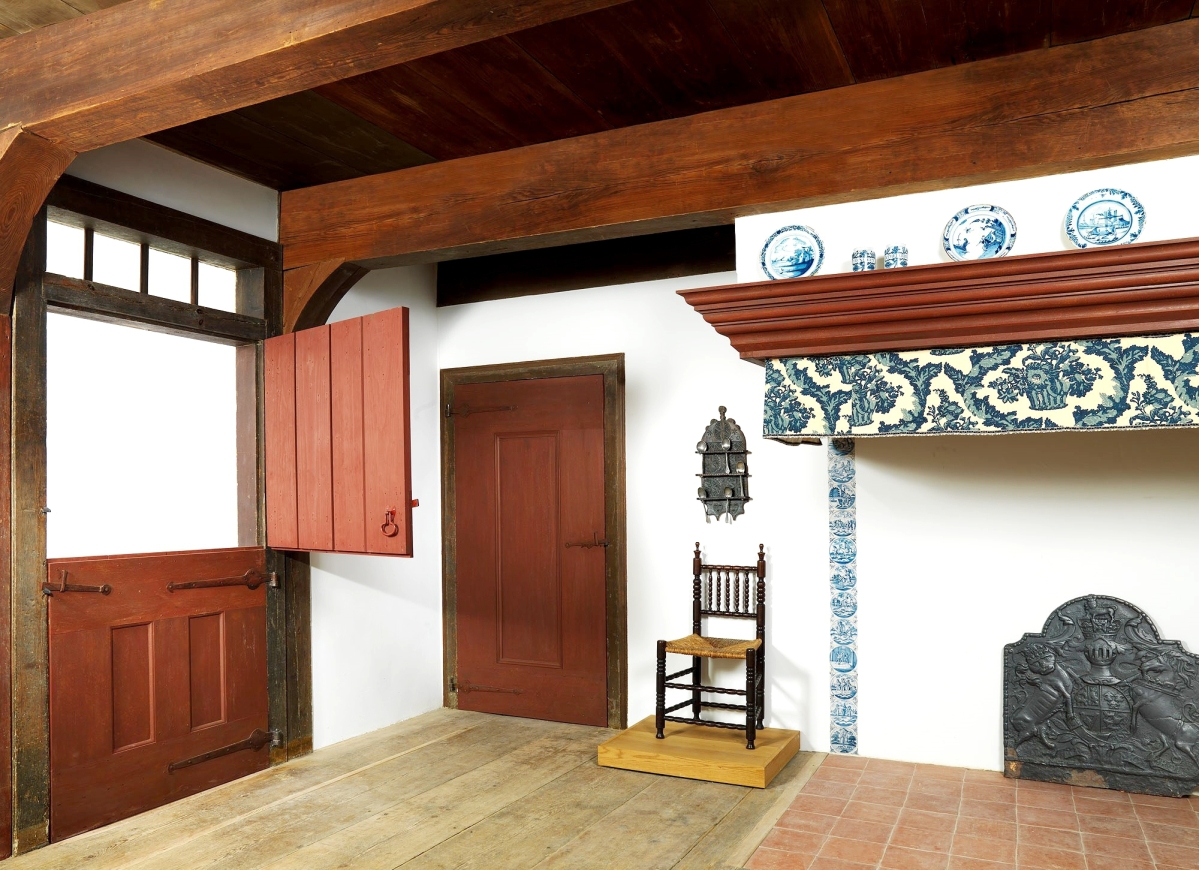
As part of the Metropolitan Museum of Art’s grand overhaul of its American Wing, Kenny oversaw the installation of the New York Dutch Room. The room’s elements are drawn from the 1751 Daniel Pieter Winne House near Albany, N.Y. Photo courtesy Metropolitan Museum of Art. —Bruce Schwarz photo
Kenny and Jenrette had known each other for years when the curator borrowed from the collector for his Phyfe show in 2011-2012. The loans included a recamier and window seats, one inscribed “D. Phyfe” and dated July 4, 1826, made for Robert Donaldson and used in his quintessential Hudson River villa, Edgewater, plus some late Duncan Phyfe & Son furniture made for Millford, a CAHPT property in Pinewood, S.C. “Without Dick, we would be missing some important pieces of the Phyfe story,” Kenny says.
Bound by their mutual interest in American Classicism, Kenny and Jenrette stayed in touch. “Dick has always been fascinated by the furniture of Phyfe and Lannuier. When he heard that I did not get the job of chairman of the American Wing after Morrie left, Dick called and said, ‘Are you ready to come work for me?'”
The institution Kenny joined consists of six properties, all Classical or Classical Revival in style and dotting the East Coast from New York to St Croix. Jenrette collected the houses, then furnished them with period art and decoration, most of it American and, when possible, original to the houses. A co-founder of the financial services firm Donaldson, Lufkin & Jenrette and former chairman of the Equitable Companies, Jenrette has so far donated Ayr Mount, Millford and the 69 East 93rd Street carriage house to CAHPT, which he established in 1993. Promised to CAHPT, Roper House, Edgewater, Cane Garden and the Baker house at 67 East 93rd Street host events and may be visited by appointment.
“Going from being a curator of American furniture to co-president of a preservation organization where we deal with entire historic houses is like becoming a large-animal veterinarian after caring for cats and dogs,” Kenny says with a laugh, adding, “Where I might have worried about the leg of a chair, I’m now concerned with using proper materials to restore massive Corinthian capitals on the enormous front portico of a Greek Revival house. I’m really wrapping my head around the idea of buildings and architecture, and, by extension, around the people who built these houses and, like Dick, loved them.”
Maintaining properties of this size and stature is costly. Climate change is adding to the expense. Rising tides are a concern at Roper House, perched harborside on the High Battery in Charleston, S.C. Hurricane Maria, the category-five storm that struck St Croix in September 2017, laid waste to Cane Garden’s landscaped grounds. “Damage to the main house was relatively superficial, but not inexpensive to repair,” notes Kenny, who would like to see the property used more frequently as a gathering place for historians of the Caribbean.
Built in 1839-41, Millford may be Kenny’s favorite CAHPT house, though Edgewater and Roper House are close seconds. Kenny admires Millford for the clarity and restraint of its ornament within a monumental scale, a hallmark of Greek Revival design, and for the documented Duncan Phyfe & Son furniture its first owner, John Laurence Manning (1816-1889), ordered in 1841. In addition to the main building and the 400 acres it sits on, Jenrette has just donated to CAHPT all ancillary buildings on the property, including Millford’s original stable and porter’s lodge. Surveying these buildings and planning for their preservation and possible future use is a project Kenny and Howell are just beginning to pursue.
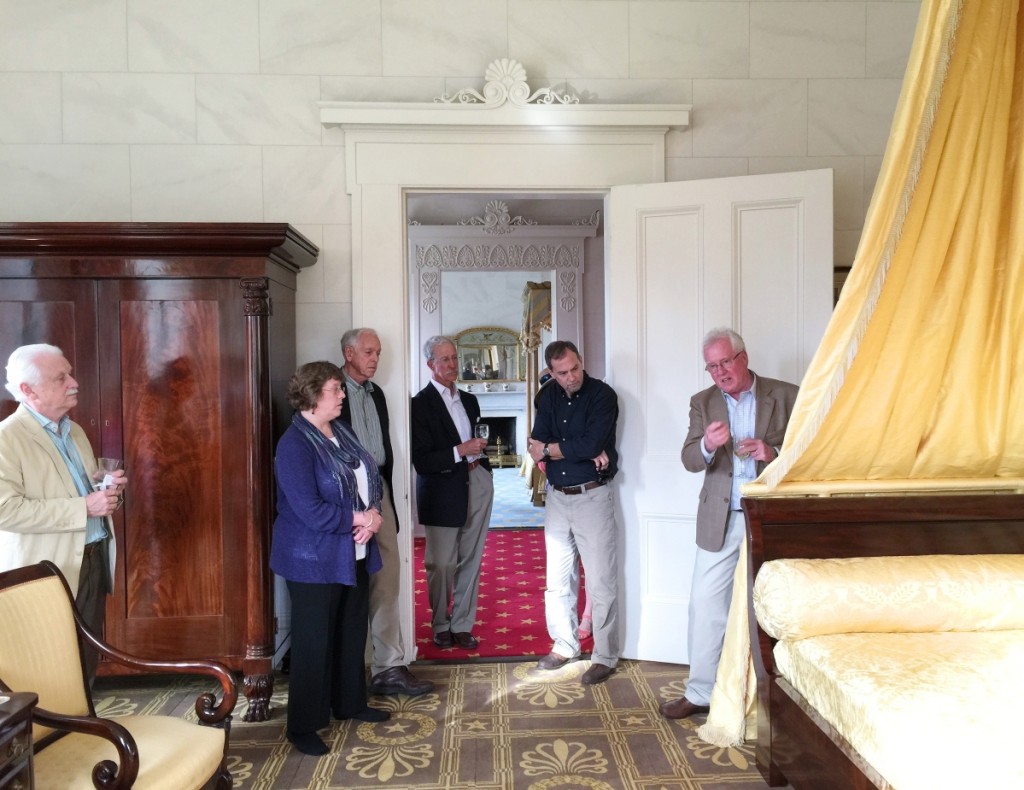
Kenny, here leading a tour of one of the CAHPT houses, spends much of his time writing, speaking, consulting and advising.
“Thinking about how Dick’s private houses come into the trust is something Margize and I spend time on. There is the preservation idea of keeping them standing and there is the programming side. Education is an important part of our mission as a not-for-profit entity,” says the administrator. Conscious of his ambassadorial role, he sees joint programs with sympathetic organizations such as the Decorative Arts Trust and the Institute of Classical Architecture & Art as an effective way of sharing CAHPT’s bounty and believes houses “make great points of entry into history.” Citing Millford as an example, he says, “I really don’t feel the need to make it look like it’s 1841 again. The house represents a fascinating continuum, from birth to decline to rebirth through the Mannings, the Clarks and Jenrette. The arc of its existence is what interests me.”
Focused essays by Kenny on the art and architecture of the houses can be found on the CAHPT website, www.classicalamericanhomes.org. The expert is also working on a book celebrating contributions to the arts by the 89-year-old Jenrette, who acquired Roper House in 1968 and Edgewater in 1969. Along with highlights from CAHPT’s collection, the tribute will explore Jenrette’s development, influenced by architect Edward Vason Jones (1909-1980) and curator Berry B. Tracy (1933-1984), as a collector, decorator and preservationist over the past half century.
How we share our knowledge of the past and inspire future generations will be on Kenny’s mind when he addresses the ADA on April 20. He recalls with pleasure visits he and Heckscher made to the 57th Street premises of the New York antiquary Israel Sack, Inc.
“The Sacks would pick up sandwiches from Katz’s Delicatessen and we’d be there until 3 pm talking. Morrie was great at getting them going. We’d call on Bernard and Dean Levy. Frank was still in school. The Levys were generous, always opening their files and inviting me out to the furniture conservation shop to show me what they were doing. And then there is Stuart Feld, whose knowledge of furniture is tremendous. So many other talented and knowledgeable American furniture dealers, conservators, cabinetmakers and curators whom I’ve met over the years have been willing to share their experience and knowledge with me. I feel very fortunate to have known these people,” Kenny reflects.
Kenny and Heckscher spent more than a decade together helping to remake the American Wing for a new century. They frequently traveled with the Met’s William Cullen Bryant Fellows. Following the ADA dinner, the men will join fellow members of the Walpole Society for the group’s spring meeting. Appropriately, it this year includes a tour and lunch at Millford. “Peter is good company everywhere he goes,” Heckscher says before ringing off. “There could never have been a better colleague for me than Kenny. Respect, trust, competence, friendship. The perfect package.”
ADA Dinner Tickets
The ADA Award of Merit dinner honoring Peter M. Kenny is planned for Friday, April 20, at 8 pm, at the Philadelphia Antiques and Art Show at the Navy Yard, 11th Street and Kittyhawk Avenue in Philadelphia. Morrison Heckscher, curator emeritus of the American Wing, Metropolitan Museum of Art, and past recipient of the ADA Award of Merit, will be the guest speaker. Tickets may be purchased online at www.adadealers.com, or send a check for $95 each to the ADA, PO Box 218, Northwood NH 03261. The ticket price includes parking. For information, contact ADA executive director Judith Livingston Loto at 603-942-6498 or email info@adadealers.com.

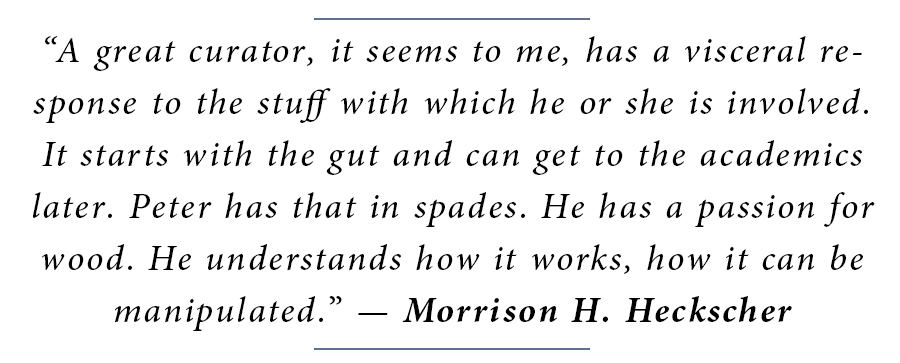
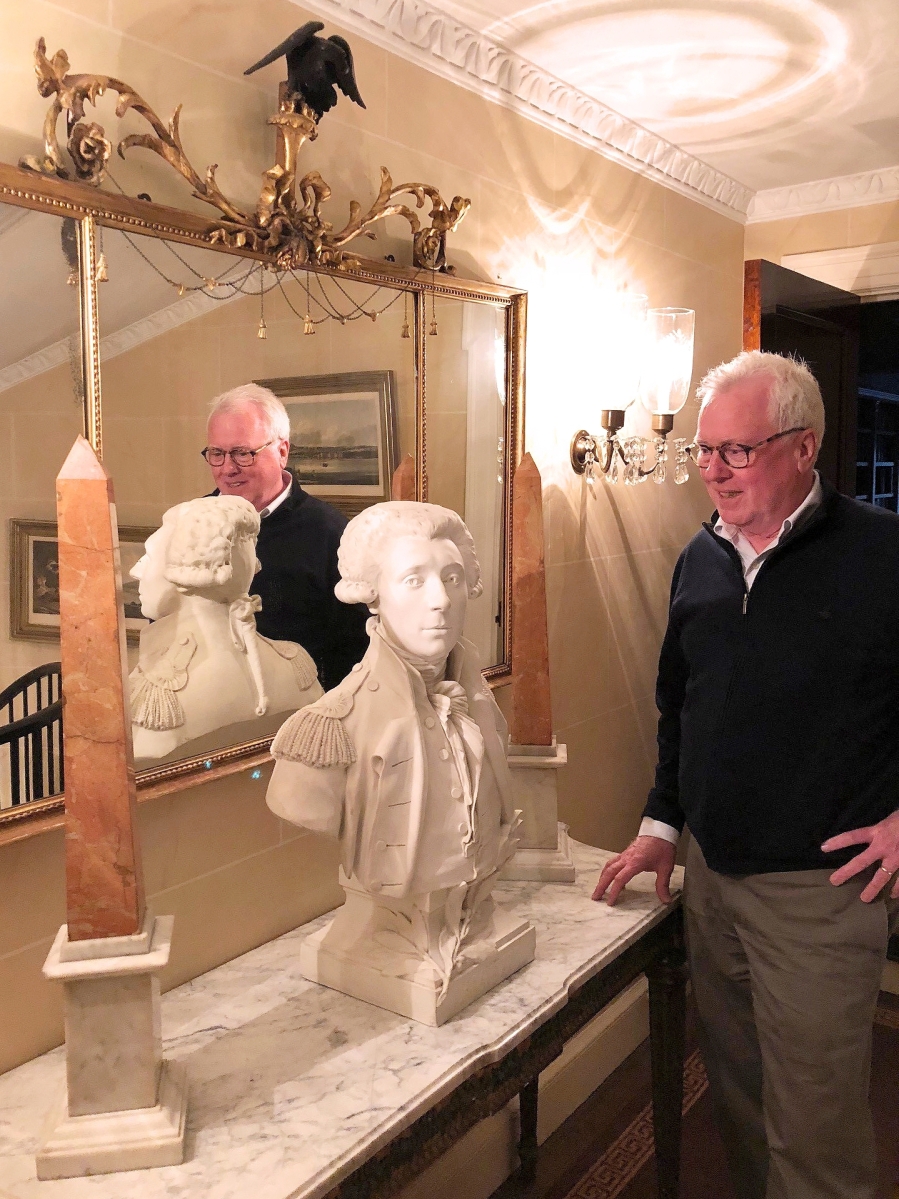
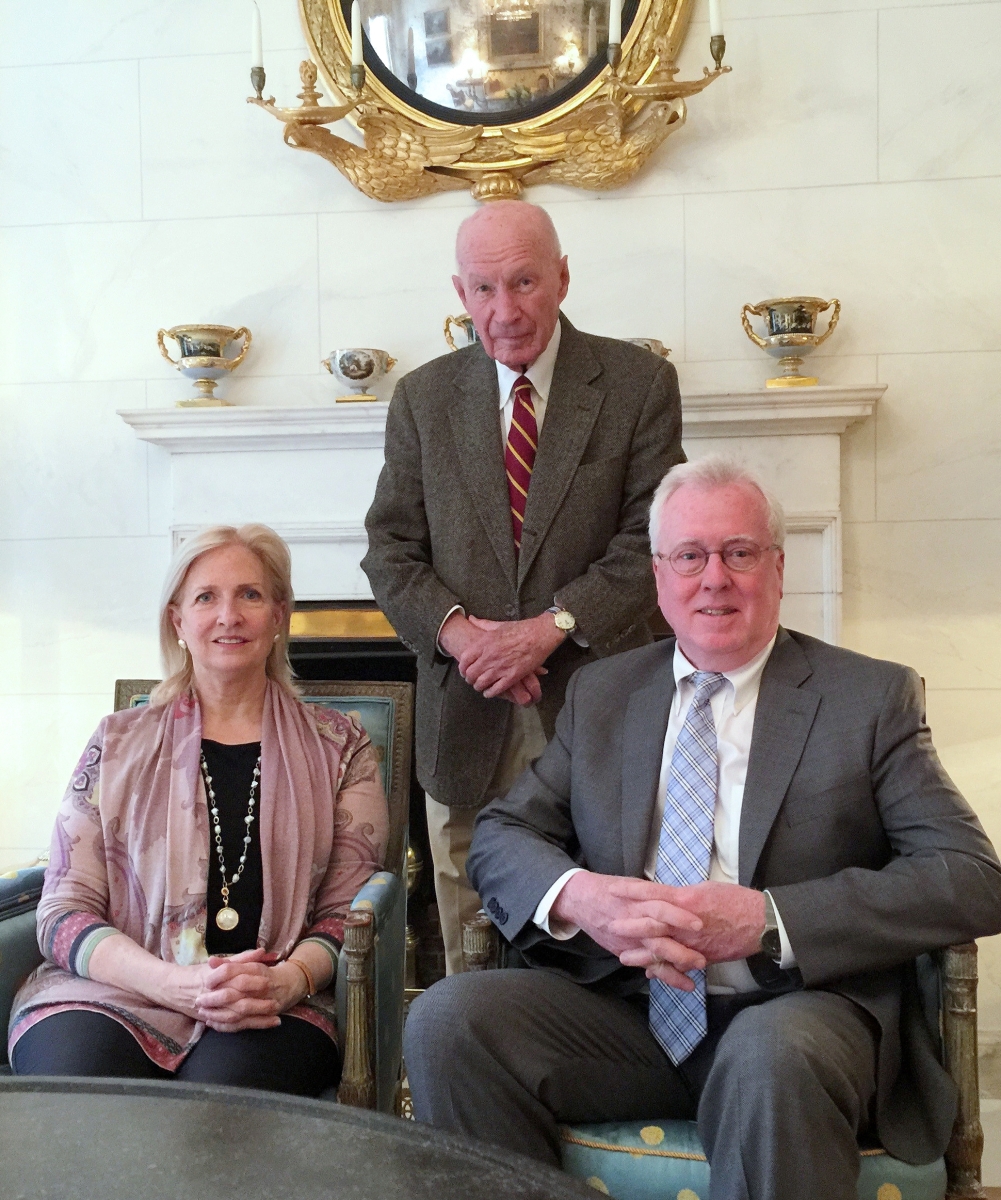
_fotor.jpg)
